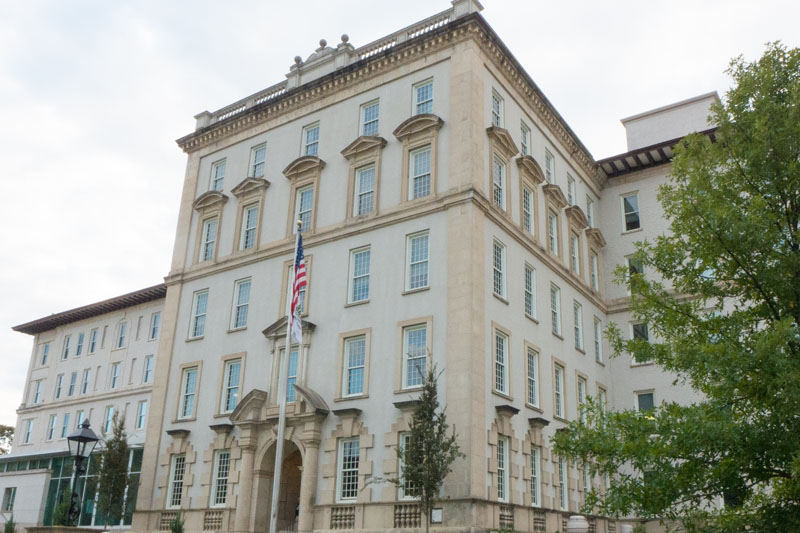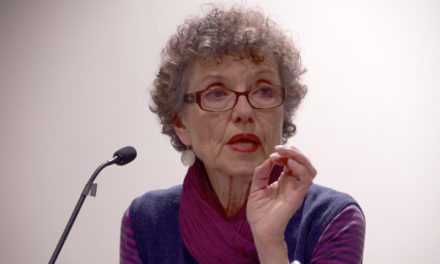Emory University and WellStar, the largest not-for-profit health system in Georgia, announced Monday that the two companies are engaged in formal discussions on unification, according to a Feb. 9 University press release.
The discussions have been approved by both the Executive Committee of the University Board of Trustees and the WellStar Health System Board of Trustees and will continue for 45 days, during which the University will “educate constituents,” according to the press release.
University President James W. Wagner said the conversation with WellStar began back in August, but long before that, Emory has long been considering the “‘ifs and whats’ of what it means to further position Emory Healthcare and our health sciences for the future,” he said in an interview with the Wheel.
“We do imagine a greater flow and accessibility of patients across the new system offering — we hope — greater service and also greater access for our research enterprise to have more platforms from which to operate,” Wagner said. “So both from the point of view of patient care, teaching and research we expect expanded access.”
WellStar CEO Reynold Jennings wrote in an email to the Wheel that he feels the most beneficial aspect of the new system will be the ability to take advantage of a larger health care system allowing the hospitals to be “better prepared to deal with the challenges in health care, while still being able to provide world-class care to our communities.”
“Our ultimate goal is to be able to provide more services to more patients,” he wrote.
When asked who would lead the potential new unified health system, Jennings wrote that the Board of Trustees for the new system would be composed of 50 percent Emory and 50 percent WellStar representatives and would select the CEO.
He added that a name for the new system has not been decided upon yet.
When asked about the name of the new system, Wagner responded that it’s too early in the discussion to know the name of the new entity but he recognized that there is “great brand value in both the Emory name and WellStar name.”
Both Wagner and Jennings said there have been no discussions regarding potential lay-offs.
“The idea is to come together to grow, come together to be better,” Wagner said. “So there has been no conversation at this stage at all about reductions.”
According to Wagner, because of the increasing conversations over the past few months, WellStar and the University felt there was need for greater input, forming the basis of the 45-day formal discussion period.
“Earlier [these conversations] have involved select groups of trustees from both entities and also executive teams from both entities,” Wagner said. “We need these 45 days to talk more broadly with the members of our respective organizations … and WellStar wishes to do the same during this period.”
Jennings agreed, writing that this period will serve to “educate stakeholders, have dialogue and answer questions.”
“This step is in preparation for committing to a multistep design process for the new health system,” he wrote, adding that the design process would take about a year to complete.
However, according to Jennings, the decision is ultimately up to the WellStar and Emory Boards of Trustees on whether to create a new, unified health system.
When the 45-day formal discussion period ends, Wagner said each organization will present the proposal to their respective boards, who will ultimately decide whether to go forward with the proposal or not. The proposal will detail how to best go forward into a phase that would design what the new entity would look like and how it would function, according to Wagner.
Wagner said to keep in mind that the two boards have already agreed on the 45-day discussion period.
“[The boards] voted independently and unanimously to move forward into this 45-day discussion, dialogue, education phase. So in concept the two boards have agreed,” Wagner said. “I think we’re looking to provide them with greater certainty about how we would move forward.”
Executive Associate Dean of Clinical Services for Grady Health System, Chief Medical Officer of Emory Medical Care Foundation and Professor at Emory’s Emergency Medicine Department Leon Haley wrote in an email to the Wheel that he agrees with the University’s decision to have formal discussions on unification.
He added that he foresees the primary benefits of the potential merger to be potential gains in “patient care and outcomes, patient access and care coordination while remembering our commitment to education and research will be the primary benefit.” He also wrote that fiscal stability and growth will be a secondary gain.
However, Haley recognizes the difficulties that may come from unification.
“‘Unification’ is not an easy process, we will have to be concerned about melding two cultures, how our people will be affected and what is the optimal benefit to the patients (cost, access, care?),” he said.
Chief Medical Officer at Emory University Hospital Midtown James Steinberg agreed with the potential financial benefits of a merger.
“[A] larger market share may help with economies of scale and ensure financial stability in a changing landscape,” he wrote.
He also wrote that he doesn’t think the merger will have negative effects on his current position or future career.
“[The potential] merger doesn’t affect my position as Chief Medical Officer at EUHM [Emory University Hospital Midtown] or my academic position as a Professor of Medicine in the Division of Infectious Diseases at EUSM [Emory University School of Medicine],” he wrote. “Having a larger network of hospitals may be a plus in doing our research on infection prevention and antibiotic stewardship in hospitals.”
Wagner said he sees the new joint institution coming to “be a very strong system.”
“It could be certainly a model for the Southeast and hopefully the country on delivering the best of community health care and academic medicine,” he said.
— By Annie McGrew, Asst. News Editor







